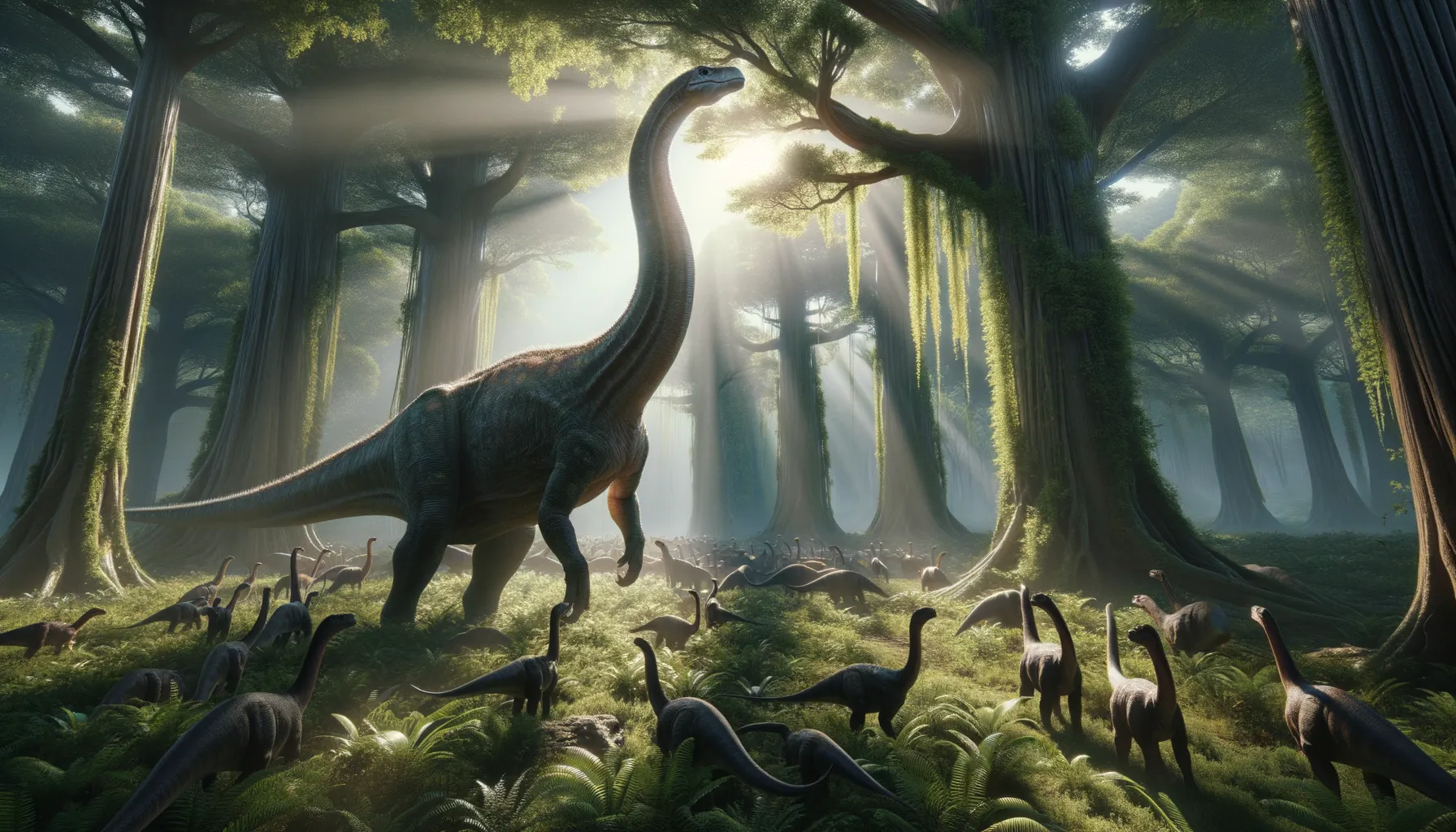
Paluxysaurus
Gentle giant of the ancient world.
Period
Cretaceous
Length
Approximately 60 feet long.
Height
Around 15 feet at the shoulder.
Weight
Estimated around 20 tons.
Paluxysaurus was a massive, plant-eating dinosaur that roamed the earth during the Cretaceous period. With its long neck and tail, it is believed to have reached towering heights to feed on vegetation from high branches. Fossil evidence suggests they traveled in herds, offering protection against predators. Its remains were first unearthed in Texas, providing a glimpse into a world of gentle giants that once thrived millions of years ago.
Diet
Paluxysaurus was a herbivore, primarily feeding on leaves, ferns, and other plant material. Its long neck allowed it to reach high vegetation and graze on a wide variety of plants.
Hunting
As a herbivore, Paluxysaurus did not hunt for food but rather foraged for vegetation. It likely spent much of its time searching for and consuming plants.
Environmental challenges
Survival in its environment required adapting to climate shifts and competitive foraging for foliage alongside other herbivorous dinosaurs. Scarcity of food during drought seasons presented significant challenges. Predation from large carnivorous dinosaurs meant that herding together was a vital protective strategy.
Speed
Slow-moving due to its massive size.
Lifespan
Estimated between 70 to 80 years.
First discovery
Discovered in the 1980s in Texas, USA.
Fun Facts
- Paluxysaurus was named after the Paluxy River in Texas, where its fossils were found.
- This dinosaur lived approximately 112 million years ago during the Early Cretaceous period.
- Paluxysaurus was a giant plant-eater, stretching up to 70 feet long and weighing about 20 tons.
- The first Paluxysaurus fossils were discovered in 1970, near Glen Rose, Texas.
- It is one of the official state dinosaurs of Texas, highlighting its importance to the region's paleontological history.
- Paluxysaurus' long neck allowed it to reach high vegetation, similar to modern-day giraffes.
- Scientists believe it traveled in herds, providing safety in numbers against predators.
Growth and Development
Paluxysaurus grew rapidly from hatchlings to giant adults, requiring significant calories from plants to fuel its growth. Its bones developed quickly, forming a robust structure to support its massive body. Juveniles were particularly vulnerable to predators, but those reaching maturity gained significant survival advantages.
Habitat
This dinosaur thrived in lush, forested areas where it had ample access to dense vegetation for food. Rivers and floodplains in its habitat provided necessary water resources. The landscape it occupied was likely warm, contributing to a rich biodiversity alongside other plant and animal life.
Interaction with other species
Paluxysaurus may have coexisted with both herbivores and carnivores, influencing its social and survival strategies. Herding potentially reduced predator risk from species like Tyrannosaurus. Its existence among varied fauna contributed to a complex ecosystem where each species interacted in delicate balance.
Natural lifespan
Paluxysaurus likely lived up to 80 years in optimal conditions.
Reproduction
Reproduction involved laying eggs, presumably in secluded or protected nesting sites. Female Paluxysaurus may have guarded nests or moved in groups to protect offspring. Hatchlings were small and susceptible to threats, relying on herd dynamics for survival.
Social behaviour
Paluxysaurus likely exhibited social behavior by forming and maintaining herds. Group living offered substantial advantages, such as protection and cooperative foraging. Social bonds might have been important for enhancing survival, particularly for juvenile members of the species.
Fossil locations
Fossils have primarily been discovered in Texas, offering vital insights into Texas’ prehistoric ecosystems. These locations have produced extensive skeletal remains that underpin current knowledge. Other potential sites have been explored to map the distribution and movement of the species.
